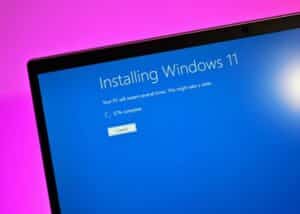Windows 11 is showing up as a Windows Update (i.e. in-place upgrade from Windows 10 to Windows 11) for some folks. A handful of people have inadvertently upgraded, not noticing exactly its intent – which is not recommended. While there is technically a path back, we’ve seen it fail and then you’re really stuck. To be fair, some folks have made it through the upgrade without significant issues (other than the regular “wow, this looks really different”, or the equally common “umm, how do I find ….”.
- The question is – are your other applications going to play nice with Windows 11? Before you hit that Windows 11 upgrade button, make sure you do some research:
- If you have applications you can’t live without, call the vendor and verify Windows 11 is supported (as an example, no versions of Quickbooks Desktop are certified with Windows 11). Quickbooks Desktop Compatibility with Windows 11
- Internet Explorer is gone for good. If you have one of the websites that “only works with Internet Explorer” – that’s a big ‘ol nope. The expectation is that Microsoft Edge should be able to do the job. And honestly, if a site won’t open in anything other than Internet Explorer, how secure can it really be?
- Microsoft Application Compatibility Promise – someone tipped me off to this (there is a lin
 k below), and it’s Microsoft’s promise that applications will work with Windows 11. However, I’ve been promised lots of things throughout my career by Microsoft, and Bill Gates never once took my call when I rang to complain. So I’d take their compatibility promise with a grain of salt. A safer idea is to call your application vendor first.
k below), and it’s Microsoft’s promise that applications will work with Windows 11. However, I’ve been promised lots of things throughout my career by Microsoft, and Bill Gates never once took my call when I rang to complain. So I’d take their compatibility promise with a grain of salt. A safer idea is to call your application vendor first.
My suggestion is to postpone the Windows 11 upgrade and allow Microsoft to work out the bugs, AND get application vendors to work their way to successful compatibility. If you have any questions, please give us a call and we are happy to discuss how the upgrade to Windows 11 will impact you specifically.
- Chris Hopkins (Moebius Technology – Network Engineering)
Additional Links:

Recent Comments